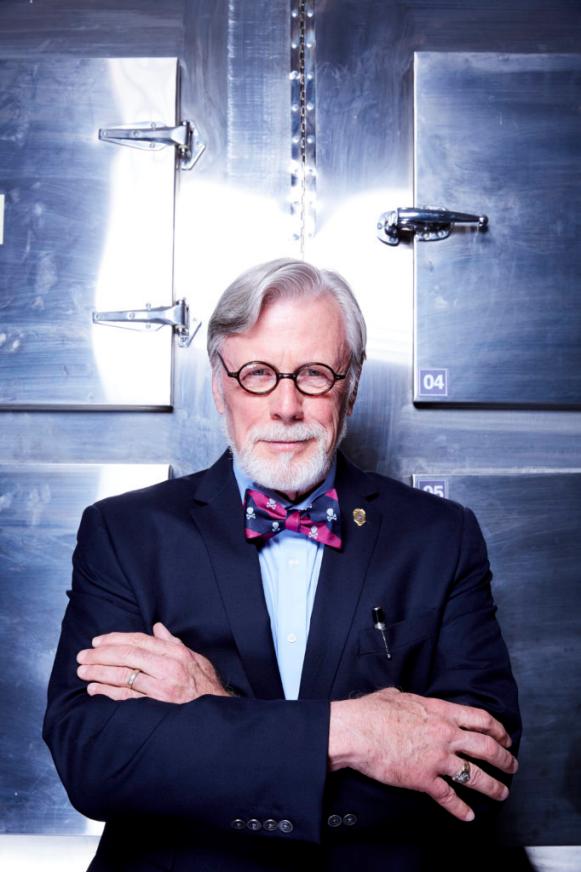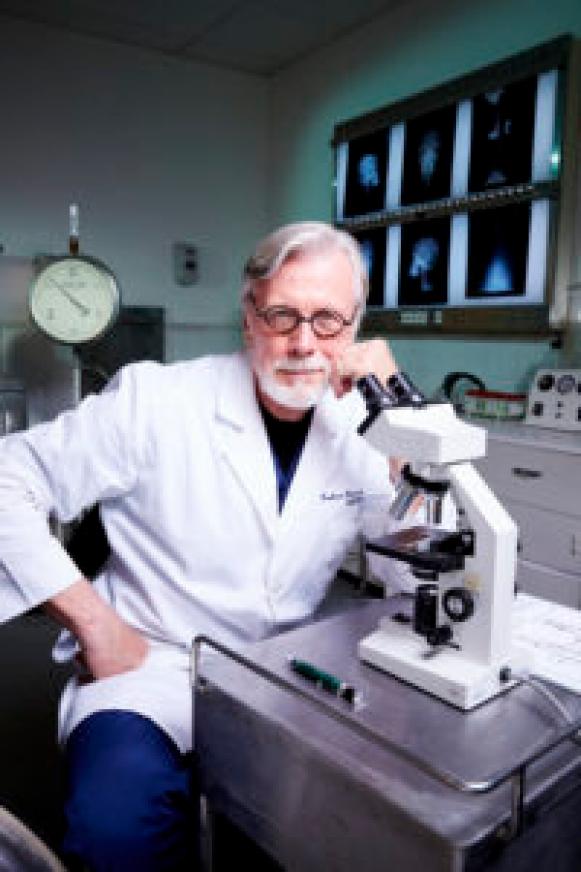Graham Hetrick Of 'The Coroner: I Speak For The Dead' On Welcoming Tech Changes In Forensics

[Investigation Discovery]
Coroner Graham Hetrick
Two sayings that pretty much everyone knows — "the only thing constant in life is change" and "a picture is worth a thousand words"— definitely hold true when it comes to forensic investigation work. After all, forensics is science applied to law, and science is continually evolving. One of the most dramatic changes in crime-scene investigation and medical-legal death investigation has been the documenting of evidence with digital photography rather than film.
The switch to digital photography in the mid 1990's was a momentous shift in recording evidence. The sheer quality and speed with which photographic evidence could be taken and processed took crime-scene documentation to a whole new level. When data in a crime scene is found, time is of the essence to get it analyzed and interpreted. The first 48 hours at a scene are crucial. Using film caused a long delay — we had to wait until the photos were processed, and often many of the pictures were out of focus, or the lighting was off.

[Investigation Discovery]
Graham Hetrick
Using digital photography, I know what I have captured before leaving the scene, because I can preview every shot on the camera playback. This seemingly small detail has been helpful in photographing evidence — especially when the images are being enhanced with alternative light sources, or the chemical enhancement of luminol is used on blood patterns, which makes them glow.
It’s a challenge to judge exposure on large crime scenes in the dark, where a process called "painting the scene" is often used. This is where the camera aperture is left open on the tripod and the photographer walks the perimeter of the scene with intermittent use of a flashlight to expose the entire area being documented. The ability to go back and check one's work instantaneously on a digital camera is priceless for good evidence documentation.
It’s funny to think about it now, but digital photography was not well understood in the beginning. We wondered at first, how permanent is the file? How easily can the digital image be altered, and how do you know if it has been? These and many more questions had to be answered on both a state and federal level before digital images could be admitted as evidence in court.

[Investigation Discovery]
Graham Hetrick
In terms of evidence admissibility, digital photography was a game-changer. The photographer was put on center stage and had to vouch for the purity of the digitized image. Each image was put under scrutiny to verify the storage of the original file and who had access to it. By 2002, most jurisdictions and the states and federal governments allowed digital images.
When I first started as coroner, most court or judges would not even allow color photos into the court because they feared the images would be too dramatic. Today pretty much anything goes, from admitting cell-phone videos and texts to Facebook live-streaming. We see now that these are being accepted as evidence and shown to juries. I distinctly remember one of my first cases in which a murder was confirmed by cell-phone photographs.
As digital imagery advances, it will change the process of investigation. The technology is growing so fast that it is hard to predict what the future will be like. One will be able to use Virtual Reality (VR) to do a walk-through of a crime scene. Even now, automated total stations record crime scenes, in 360-degree fashion, documenting the location of evidence while showing spatial relationships between the victim and the evidence at the scene. In the future, a detective could revisit a site via a hologram, projecting 3D images from the crime scene location in real time. I personally would love to see this.
In the field of medical-legal death investigation, advancements in CAT scans and MRI imagery have also greatly enhanced the understanding of wound patterns on bodies. I foresee that there will be physical autopsies and virtual autopsies, both offering different perspectives.
An exciting part of my job is the constant challenge to keep up with these changes. New discoveries in science, equipment, and methodologies make every day a new day.
Tune in to the premiere episode, "First Cut Is the Deepest," of season two of Investigation Discovery's The Coroner: I Speak for the Dead on Monday, July 17, at 10/9c!
